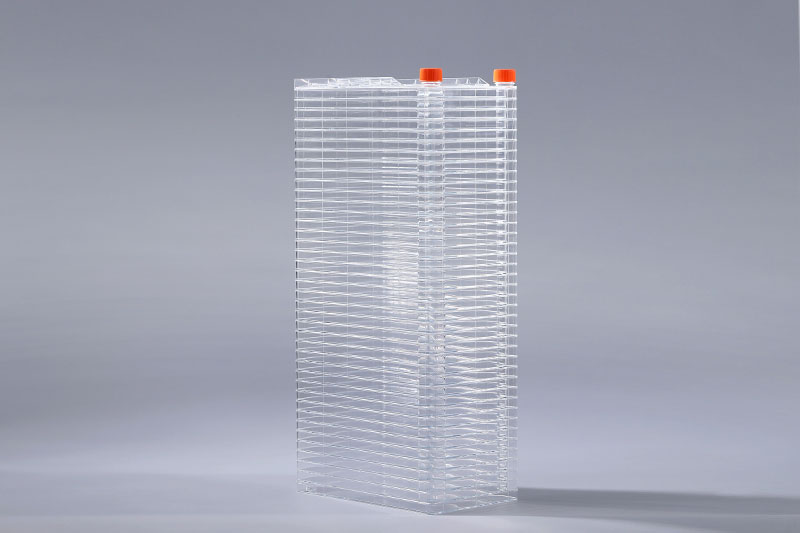Cell factories are mainly used for large-scale cell culture. Cells have high requirements on the environment, such as temperature, humidity, osmotic pressure, pH value, etc. Therefore, this kind of cell consumables also has high requirements on raw materials.
The first is transparency. In the process of cell culture, it is necessary to grasp the growth state of the cells at any time, and make corresponding adjustments according to the cell proliferation. Therefore, the raw materials of the cell factory must meet the requirements of transparency, so that it is convenient for researchers to observe the growth of cells.
The second is the compatibility of materials. The raw materials of this consumable generally meet the requirements of USP Class VI medical polymer materials. Medical polymer materials refer to polymer materials used to manufacture human internal organs, external organs, pharmaceutical dosage forms and medical devices, and their sources include natural biopolymer materials and synthetic biopolymer materials. There are 6 levels of USP Class I-USP Class VI in the US plastic classification test, and a plastic rated as the sixth level of US medical plastics means that a very comprehensive and rigorous test has been established. Its test items include systemic toxicity test (mice), intradermal reaction test (rabbit), and implantation test (rabbit). Level 6 is the gold standard for all kinds of medical-grade raw materials and a very high-quality choice for medical device manufacturers.
The reason why the cell factory chooses USP grade VI medical polymer materials is that the raw materials of this grade are of high purity, which can ensure the transparency of the finished product and is more conducive to the adsorption of adherent cells.
The FAI climbed 5.9 percent year-on-year in the first 11 months of 2018, quickening from the 5.7-percent growth in Jan-Oct, the National Bureau of Statistics (NBS) said Friday in an online statement.
The key indicator of investment, dubbed a major growth driver, hit the bottom in August and has since started to rebound steadily.
In the face of emerging economic challenges home and abroad, China has stepped up efforts to stabilize investment, in particular rolling out measures to motivate private investors and channel funds into infrastructure.
Friday's data showed private investment, accounting for more than 60 percent of the total FAI, expanded by a brisk 8.7 percent.
NBS spokesperson Mao Shengyong said funds into weak economic links registered rapid increases as investment in environmental protection and agriculture jumped 42 percent and 12.5 percent respectively, much faster than the average.
In breakdown, investment in high-tech and equipment manufacturing remained vigorous with 16.1-percent and 11.6-percent increases respectively in the first 11 months. Infrastructure investment gained 3.7 percent, staying flat. Investment in property development rose 9.7 percent, also unchanged.
 English
English



















































